Attracting the Next Healthcare Workforce
Did you know the US has been experiencing a shortage of health workers?
According to a 2022 U.S. Surgeon General Advisory, there’s expected shortages of healthcare professionals by 2033. The magnitude of the expected shortfall of professionals is staggering. And by 2033, the U.S. is expected to be facing critical need for:
1.4K
Physicians
1.1M
Registered Nurses
+3M
Healthcare workers
The hardships faced by healthcare workers in the wake of COVID have also impacted the career longevity of health professionals. Many health workers suffer from extreme exhaustion, mental stress, and physical effects from both, as demonstrated from these interviews.
“I’ve experienced 3 severe burnouts in 27 years as a nurse and educator. Sometimes, I want to hang it up and sell clothes at the mall because it’s so demanding and intense.”
“To manage the stress of my career, I have to be proactive with mental health care, practice what I tell students – about therapy, physical body, …emotions. It can be an overwhelming career, especially since COVID.”
Our CX team needed to tell this story. It would become the catalyst for a web campaign designed to increase the numbers of young people entering health career paths. We had a clear role to promote federal support and opportunities for health professionals throughout their careers. And we had measurable outcomes to deliver: to see increases in engagement with support systems from the U.S. Department of Health and Human Services (HHS) for health workers, including in underserved rural areas, and to ultimately see a rise in the numbers of young health professionals.
Timeline
The project was kicked off and completed within 4 months:
- June – Team assigned; milestones set
- July – Human-centered design workshop; concepts drafted
- August – User research on iterative wireframes
- September – User testing; Optimization A/B testing; compliance reviews; final edits
- October – Launch and promotion; measuring outcomes
CX Highlights
Human-Centered Design Workshop
The customer experience (CX) was set as the focus from the start. In our workshop session, our User Experience Researcher (UXR) led the team through activities to clarify and align their communication goals. The workshop outcomes were a set of clear milestones, articulated customer goals, articulated agency goals, and defined project process. The workshop set the tone for how the team continued collaboration throughout the project.
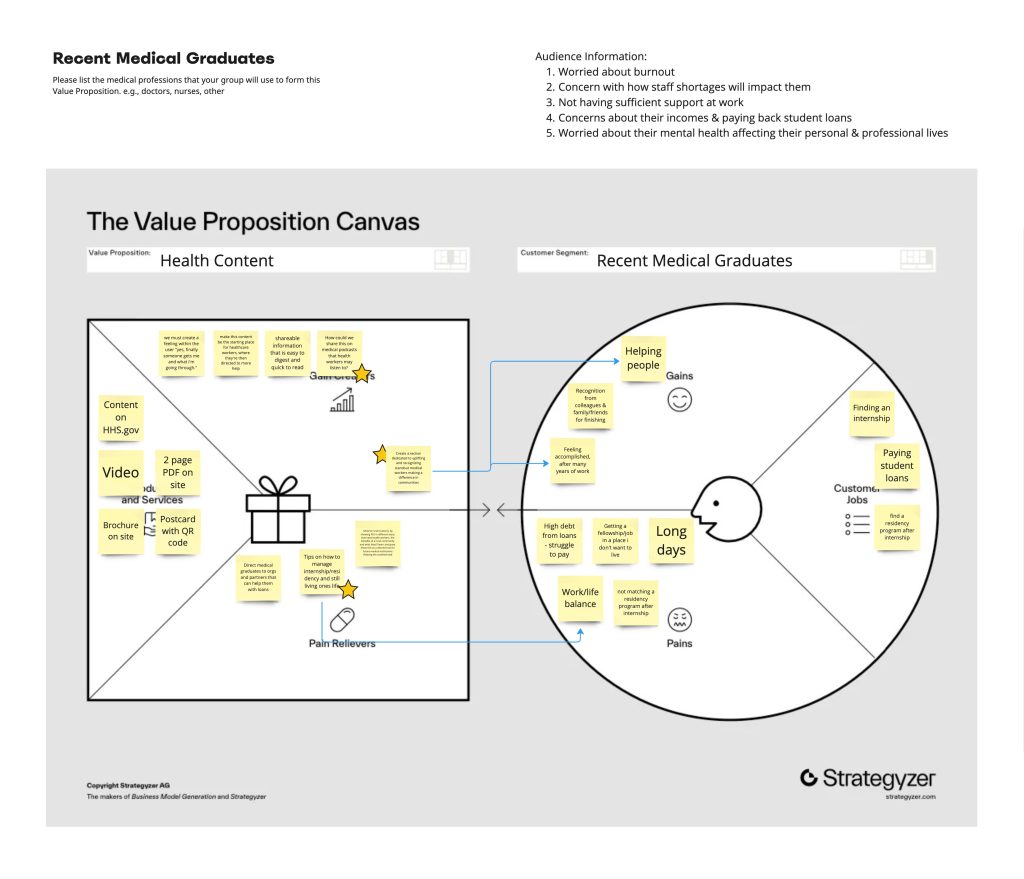
User Research
Working from the defined communication goals and desired outcomes, the CX team put our first medium-fidelity wireframe to the test. Our team researcher designed a testing plan that would elicit user feedback and reveal how well the site was working in terms of its copywriting, content strategy, information architecture (layout and organization of information), and overall success in providing the information users wanted. After formulating the wireframe test plan, we analyzed the feedback from real students or working professionals in the health field.
“These are very abstract titles. There’s a lot of clicking…I’d have to go through all these (links) to find this.”
“The biggest hindrance is people thinking they can’t afford to pay for school. This could help ease their mind.”
“As a healthcare worker in a rural location, I find this very interesting since it’s pretty much exactly what I’m living.”
Iterative Wireframes
Outcomes from our user research and prototype testing revealed opportunities to increase the effectiveness of the experience in delivering the key messages and information to our target audiences.
One change we made was to improve the ease of identifying the information that most resonates with users. We added on-page navigation to both surface the below-the fold topic areas and to enable quicker user access.
It was also important for us to tweak the jargon-heavy content to align better with federal plain language guidelines, which, in turn, addressed the testing feedback that the labeling was too abstract. Additionally, we listened to the participants’ desires to learn more about how to fund their education before joining the health workforce and turned that into a dedicated page about scholarship, loan repayment, and paid training opportunities.
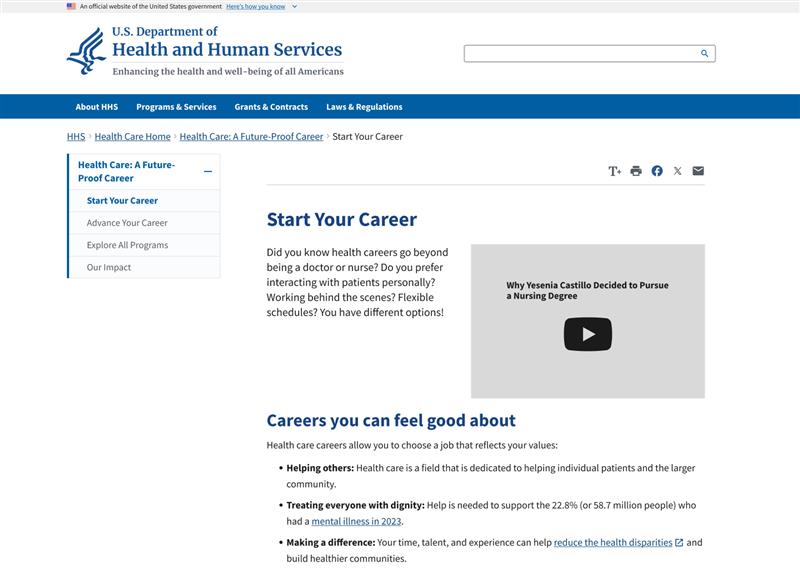
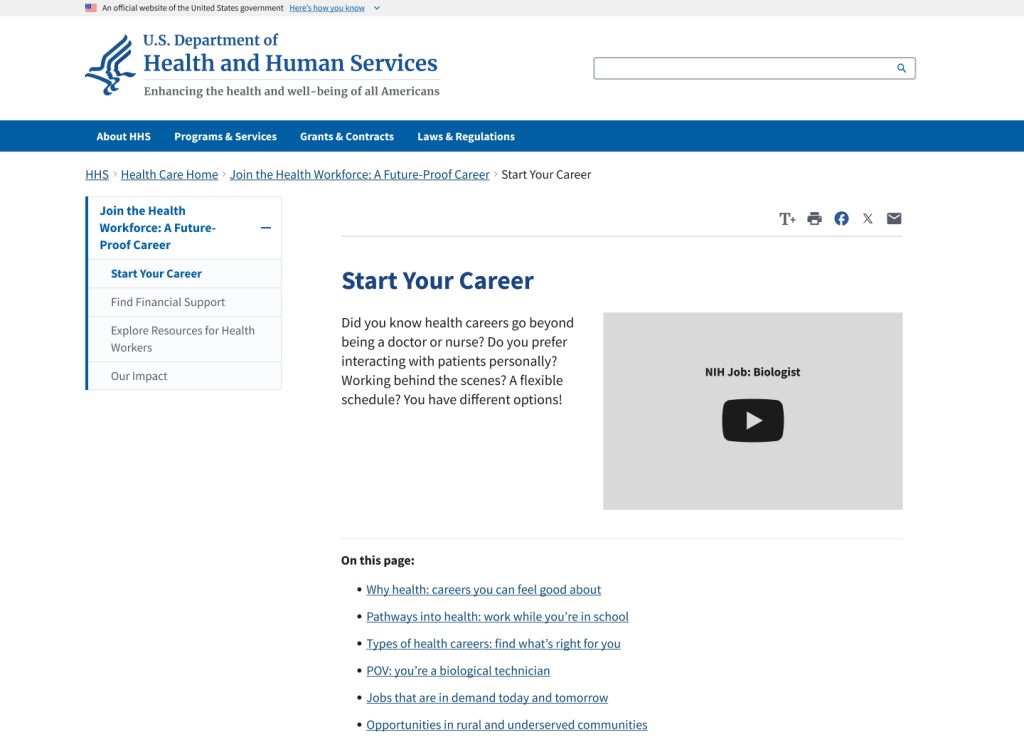
User Testing
We designed a new prototype and conducted a round of user testing to see if our revisions moved the needle. It was vital for us to learn if our newest iteration had improved the site content (tone and language) and navigability. It turns out that we were on the right track.
There were noted improvements when we measured the accuracy of user expectations to site content and delivery. We also learned there were still areas where we could optimize the experience.
“It makes sense, trying to recruit more people to get started in the medical field. It’s laid out in a sequential way.”
“There’s so many areas in medicine to work in. These are a few examples. …(It) would be better to put (in) more examples.”
Optimization A/B Testing
Along with our focus on content improvements, we conducted a mini survey to identify stylistic direction for site images and tone. Using an A/B testing technique, we opposed two designs that varied in visual image treatment.
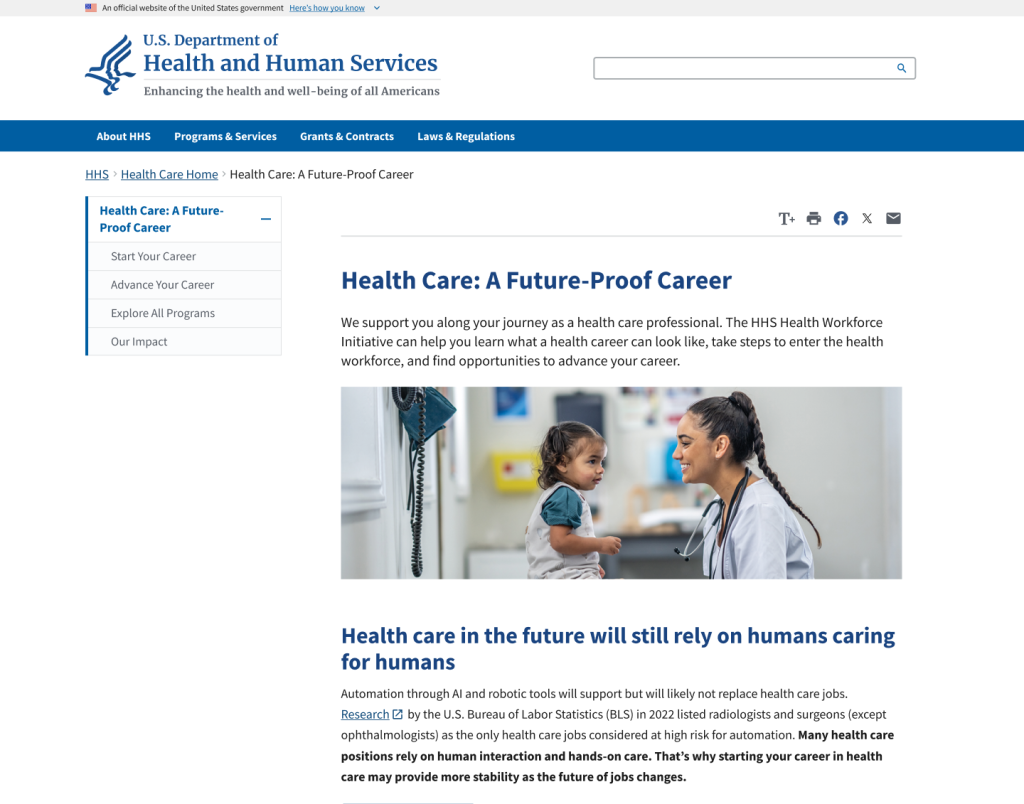
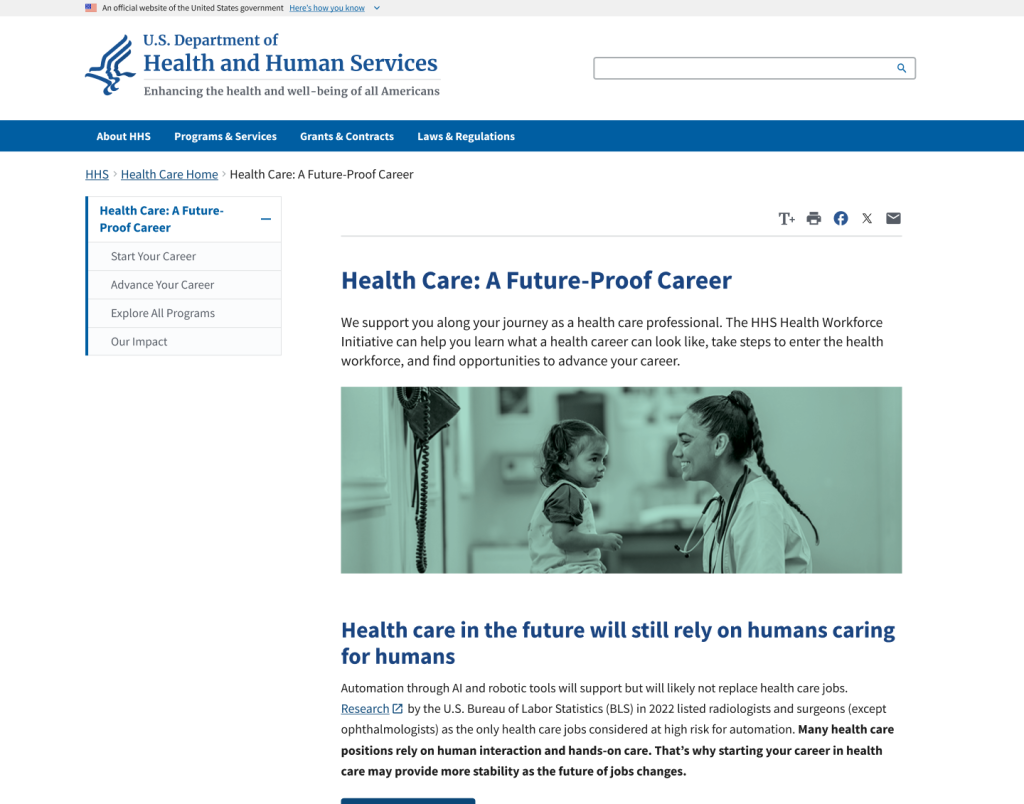
Survey Results ( at mid-point of data collection)

Measuring Outcomes
Too often, sites are designed and developed, then launched and left to stagnate. Especially given the powerful role this health workforce initiative was expected to play – and with clear goals to deliver measurable increases in the rate of usage of federal programs that support health careers – it was essential to get initial site performance metrics.
Also too often, Google Analytics or other types of site “usage” data are referenced as the sole source of data for a site’s performance. Yet to accurately set experience performance baselines, we needed to ask our target user audiences questions about their ease of finding content and about the messaging and their impressions of the site’s intentions and its potential for usefulness in their lives.
Once the site was live, we did a final round of user research. The data we gathered in this round served to validate the customer experience, set a baseline for continuous monitoring and measuring the site’s effectiveness against our target experience outcomes, and build an initial backlog for ongoing, iterative design and content cycles.


